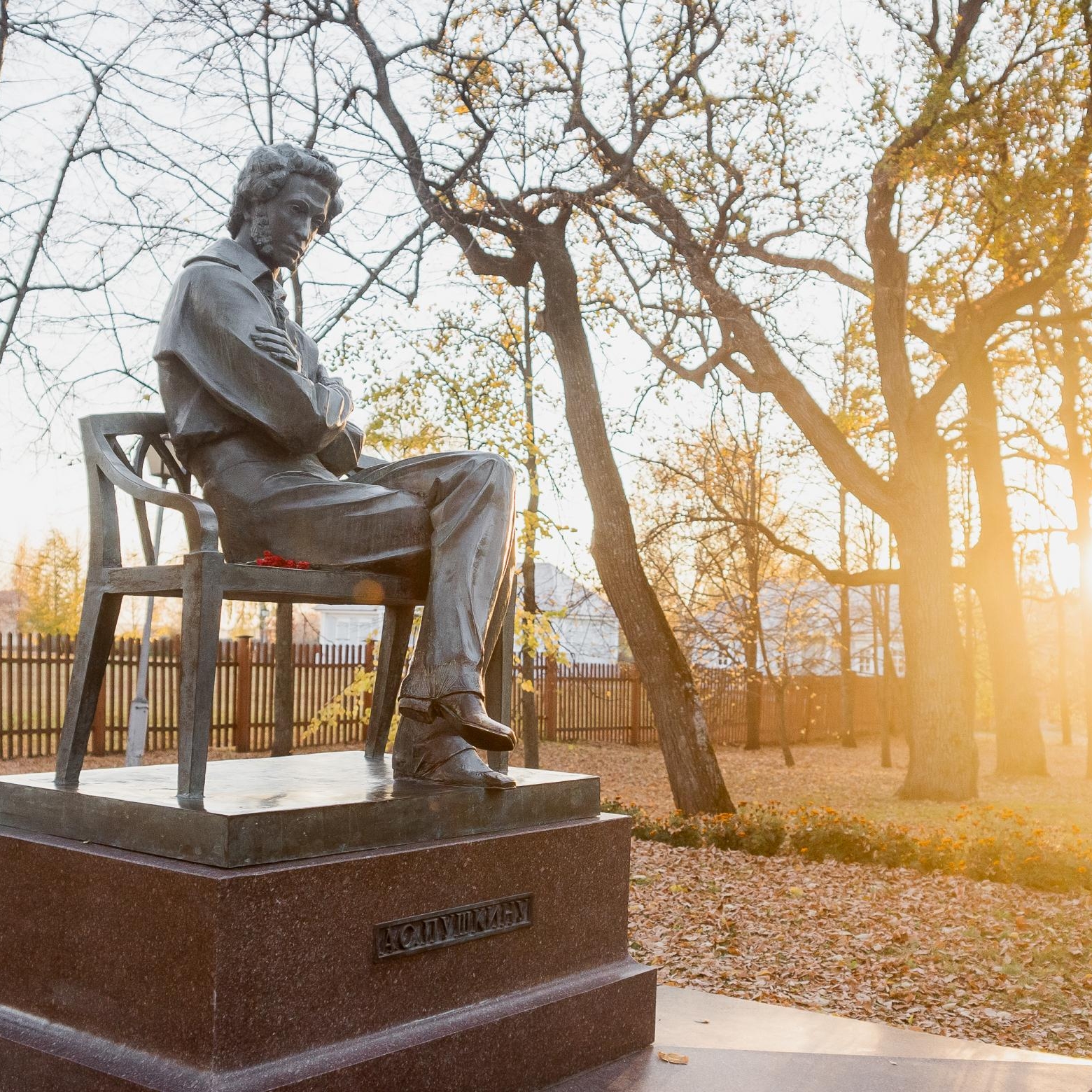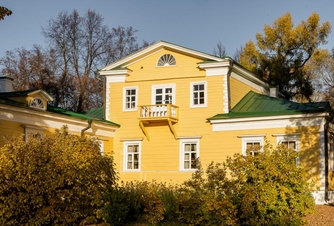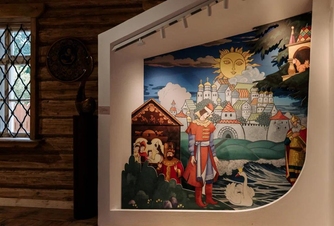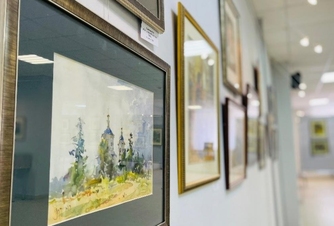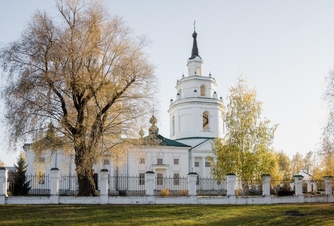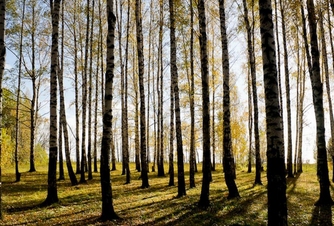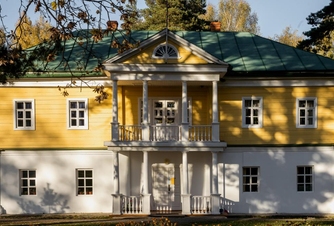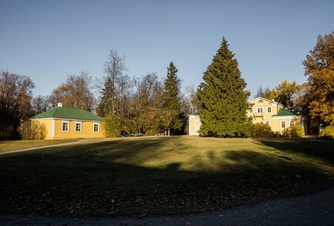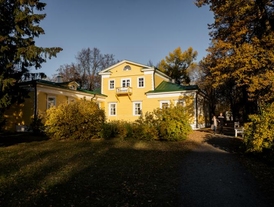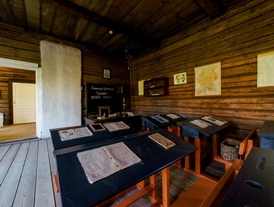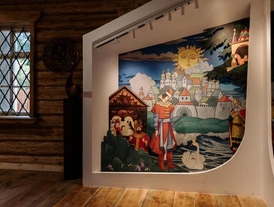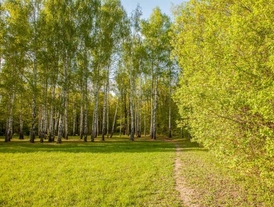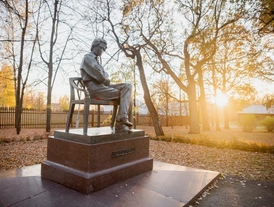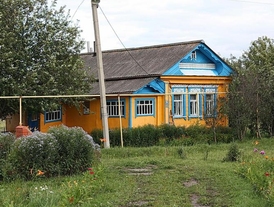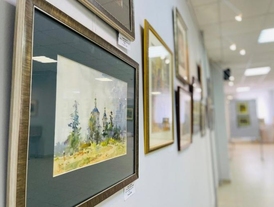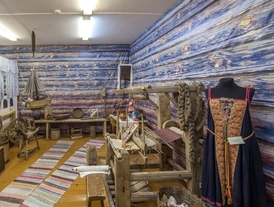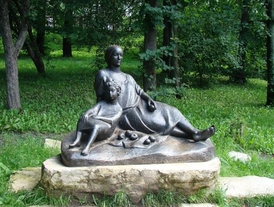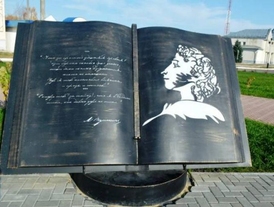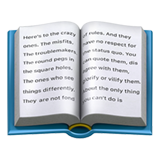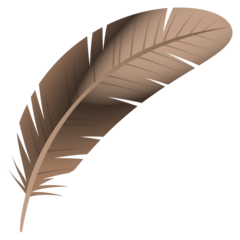Bolshoye Boldino
You may have already heard something about the «Boldino Autumn» – the most fruitful period in the life of Alexander Pushkin. Over the course of three months of self-isolation due to a cholera epidemic, the writer created «The Tales of Belkin», «Little Tragedies» and even the last chapters of «Eugene Onegin». It is best to come to Bolshoye Boldino in the autumn, of course, but whatever the time of year it is a great trip for the whole family, of equal interest to both children and adults. However, it is a long journey to get there.
A FEW FACTS
WHAT TO DO IN THE CITY
01
First of all, pay a visit to the Boldino A.S. Pushkin Museum
Alexander Pushkin visited his family estate, which had belonged to them since the end of the XVI century, a total of three times, in 1830, 1833 and 1834. The original XIX century manor house and manor park have been preserved in Boldino. In the manor house museum, you can see the recreated furnishings of the rooms where the poet stayed, and of course, learn about the works that were created here. At the end of the last century, the manor including manor kitchen, bathhouse, stable with a carriage house and barn, and reception room was restored. In 1997, a museum of Pushkin's fairy tales was opened in the houses built for the clergy next to the estate.
02
Visit the patrimonial office
This is the administrative center of the estate, a typical feature of any landowner's household. Here they assigned work to the peasants, collected taxes, and tried them for various offences. The Boldino office is interesting, not only as a monument to the history and everyday life of the XIX century, but above all as part of the Pushkin household estate, because it was Boldino that gave the poet's father his main income. The utility room was intended for the work of the Boldino estate manager and his assistants, primarily the clerk, while the second room is a living room. It is known that in the autumn of 1834, having arrived on the Boldino estate, the poet stayed in one of the rooms of the patrimonial office, and not in the manor house because of repair works.
03
Revisit your childhood at the Pushkin Fairy Tale Museum
Next door to the estate, in two restored houses originally built for the former church clergy, there is a museum dedicated to Pushkin's fairy tales. IIt was opened here for a reason: in Boldino the poet wrote almost all his fairy tales, four of the five completed stories: «The Tale of the Priest and his worker Balda», «The Tale of the Fisherman and the Fish», «The Tale of the Dead Princess and the Seven Heroes», and «The Tale of the Golden Cockerel». Most of the exhibition is dedicated to dolls representing the characters from Pushkin's fairy tales and pieces of embroidery depicting their plots, so children should definitely be interested here.
04
Appreciate the works of art dedicated to Pushkin
The fund of the Bolshoye Boldino Art Gallery contains the world's only collection of paintings and graphic works dedicated to the Boldino period in the life and work of Pushkin. It has over 500 works by masters from all across Russia.
05
Visit the Church of the Assumption of the Mother of God
This church is located right in the center of the Pushkins’ ancestral heritage. It is simultaneously an architectural monument to the XVIII century and a historical monument to the 1830s, forever associated with the stay and creative activity of the great poet. The Church of the Assumption is located next to the manor house where Pushkin lived and worked in the 1830s. Every day the poet saw from the windows of his office everything that happened in the square next to the church, and witnessed many scenes from folk life: weddings, festivities, religious holidays, funerals.
06
Take a walk through the Luchinnik grove
This protected grove stretches across a hill two kilometers south of Bolshoye Boldino. From the edge of the forest, a steep descent leads to a pristine-clear spring. This was one of Pushkin's favorite places for horseback riding. They say that the name came from the poet himself, who forgave a serf who had chopped down several birch trees for kindling out of need, having nothing with which to light his hut. The poet said: «Wait before you start hacking. This young grove is a real source of torches, it will serve you well later.» Every year in early June, the All-Russian poetry festival takes place here.
07
Pay a visit to the Pushkin estate in the village of Lvovka
Don’t be lazy, take yourself on a trip to the village of Lvovka, located a mere 8 kilometers from Bolshoye Boldino. The village was named in honor of its first owner, Lev Pushkin, the poet's grandfather. Here you can not only go for a walk, but also visit the Alexander Nevsky Church, and a couple of local museums.
08
Feel the spirit of the times in the Lvovka museums
There is a museum dedicated to the literary characters of «The Tales of Belkin». The interiors of the exhibition take visitors back into the world of the characters of Pushkin's stories. To take just one example, the literary-themed interior of Ivan Petrovich Belkin's study is dedicated to the central character of the works, Belkin himself, and the entire exhibition is based on items of aristocratic furniture and decor from Pushkin's time. In the well-preserved building of the parish school, built in Lvovka for the peasant children, the classroom environment has been fully recreated. The interior was created based on the memories of the local old-timers, and the exhibits include authentic school supplies, textbooks from the early XX century, even contemporary editions of Pushkin's works. All in all, very atmospheric indeed!
